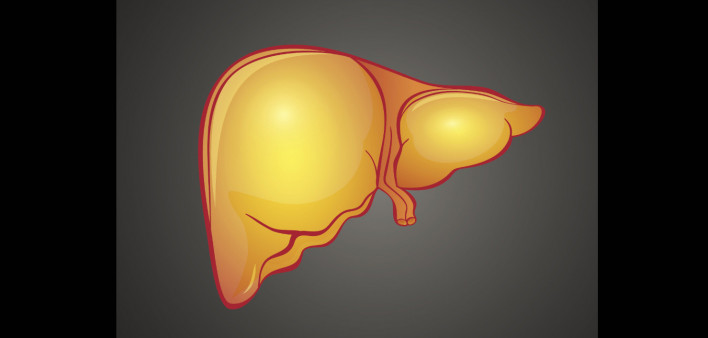A weekly injection of semaglutide [brand names Ozempic or Wegovy] was safe and reduced the amount of fat in the liver by 31% in people with HIV and metabolic dysfunction-associated steatotic liver disease (MASLD), according to a presentation today at the 2024 Conference on Retroviruses and Opportunistic Infections (CROI) in Denver.
This is the first clinical trial of semaglutide for MASLD in people with HIV. The research was sponsored by the National Institute of Allergy and Infectious Diseases (NIAID), part of the National Institutes of Health, and conducted in the United States and Brazil by ACTG, a global clinical trials network focused on HIV and other infectious diseases. ACTG is funded by NIAID and collaborating NIH institutes. McGovern Medical School at UTHealth Houston also contributed funding for this study.
Previously known as non-alcoholic fatty liver disease, MASLD is characterized by the accumulation of excess fat in the liver that is not caused by alcohol consumption or viral hepatitis. Over time, fat deposits may cause inflammation and cellular damage, and can result in cardiovascular and liver disease. MASLD also is associated with obesity, type 2 diabetes, and other metabolic disorders. It is the most common cause of chronic liver disease in the United States, and a leading reason for liver transplantation. An estimated 30% to 40% of people with HIV experience MASLD, slightly higher than the average among people without HIV. Semaglutide is an antidiabetic medication approved for use for the treatment of type 2 diabetes and an anti-obesity medication used for long-term weight management.
The Phase 2b pilot study enrolled people with HIV and MASLD aged 18 years and older whose viral load—the amount of HIV in the blood—was suppressed to undetectable levels by antiretroviral therapy (ART). Participants were diverse with respect to ethnicity, race, gender, and age. Of the 49 participants included in the analysis, 40 (82%) were taking ART regimens containing an integrase strand transfer inhibitor, which is a class of antiretroviral drugs shown to be highly effective at suppressing HIV but associated with weight gain in some people.
Participants self-injected semaglutide on a weekly basis at increasing doses until they reached a 1 milligram dose at week four and participated in frequent safety monitoring visits. At 24 weeks, the study team assessed changes in participants’ liver fat content using a type of MRI specifically designed to measure the amount of fat in the liver. Participants experienced an average 31% reduction in liver fat, with 29% of participants experiencing a complete resolution of MASLD, meaning their liver fat decreased to 5% or less of overall liver content. They also experienced weight loss, reduced fasting blood glucose (the amount of sugar in the blood) and reduced fasting triglycerides (a type of fat in the blood), consistent with effects observed in studies of semaglutide in people without HIV.
A separate analysis showed the volume of psoas muscle — a large muscle connecting the torso to the lower body — also decreased with no significant change in physical function. Semaglutide was generally well tolerated with an adverse event profile similar to that observed in people without HIV. The most common adverse events were gastrointestinal and included nausea, diarrhea, vomiting, and abdominal pain. Two participants experienced more significant adverse events possibly related to semaglutide but were able to continue in the study. All participants completed the full 24 weeks of therapy at the originally prescribed dose.
These findings suggest that semaglutide is a safe and effective therapy for MASLD in people with HIV. The study may help inform healthcare decisions by people in consultation with their providers, as part of an approach to healthier aging with HIV over the life span. According to the investigators, additional research is underway to understand whether people with HIV experience any unique immunologic or inflammatory pathway changes while taking semaglutide therapy.
This news release was published by the Food and Drug Administration/National Institutes of Health on March 5, 2024.







Comments
Comments